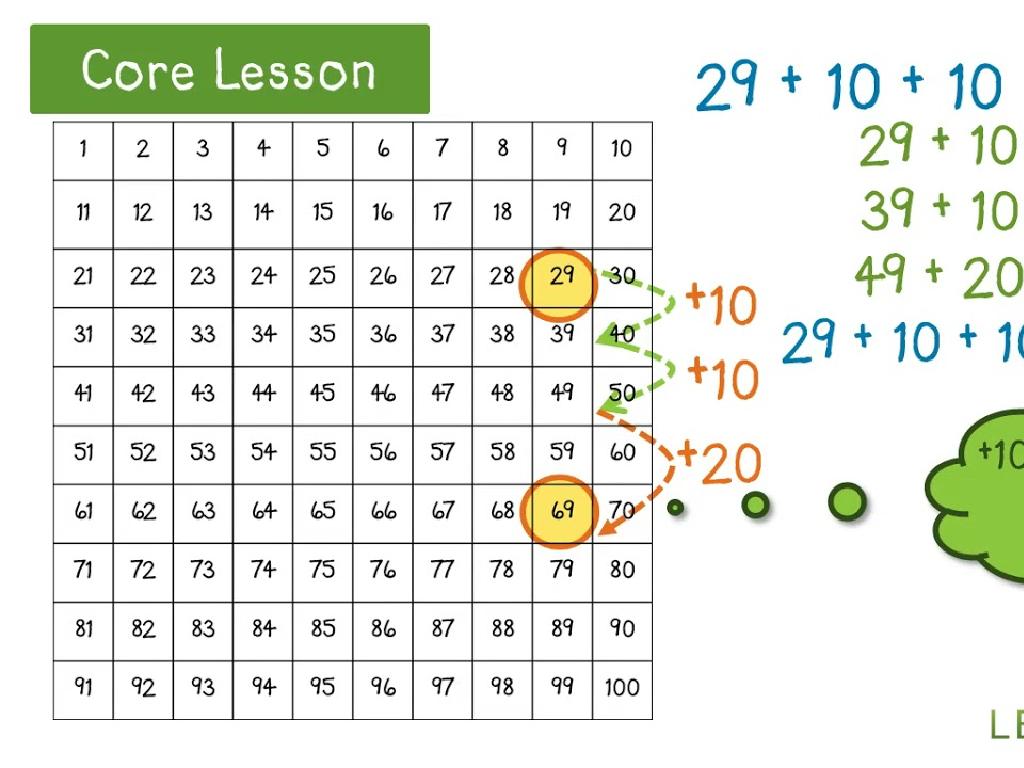Name Countries Of Africa: Review
Subject: Social studies
Grade: Sixth grade
Topic: Africa: Geography
Please LOG IN to download the presentation. Access is available to registered users only.
View More Content
Exploring Africa’s Geography
– Introduction to Africa
– Africa is the second-largest continent with diverse landscapes and cultures.
– Why learn about African countries?
– Understanding different countries fosters global awareness and cultural sensitivity.
– Today’s focus: Country names
– We’ll revisit the names of the countries we’ve learned so far.
– Engage with Africa’s diversity
– Recognize the vast number of unique countries within the continent.
|
This slide is designed to introduce students to the vast and diverse continent of Africa. Begin by discussing Africa’s size and the variety of its landscapes, from deserts to rainforests. Emphasize the importance of learning about different countries to appreciate cultural diversity and global interconnectedness. Today’s lesson will focus on reviewing the names of African countries, which will help students become more familiar with the continent’s geography and the individuality of each country. Encourage students to think about the different environments and cultures that exist within Africa and how each country contributes to the continent’s rich tapestry.
Exploring the Map of Africa
– Learn the four cardinal directions
– North, South, East, and West are key for navigation
– Locate countries using an interactive map
– Use tools like zoom and search to find nations
– Group activity: Identify countries
– Students take turns to point at countries on the map
– Discuss the importance of geography
– Understanding geography connects us to the world
|
This slide is designed to engage students in a practical understanding of African geography. Start by explaining the four cardinal directions, which are fundamental for reading any map. Introduce the interactive map tool, demonstrating how to use features like zoom and search to find specific African countries. The group activity involves students taking turns to locate and point out countries as they are called out, fostering a collaborative learning environment. Emphasize the importance of geography in understanding global cultures, economies, and environments. This activity not only helps students memorize the countries of Africa but also enhances their map-reading skills and spatial awareness.
Exploring the Regions of Africa
– Africa’s five regions
– North, West, Central, East, and Southern Africa
– Countries in each region
– North: Egypt, Libya; West: Nigeria, Ghana; Central: Congo, Cameroon; East: Kenya, Ethiopia; South: South Africa, Botswana
– Diversity within regions
– Cultural, linguistic, and environmental diversity
– Significance of regional differences
|
This slide introduces students to the five distinct regions of Africa, emphasizing the vastness and diversity of the continent. Each region has unique characteristics, cultures, and environments. For example, North Africa has strong historical ties to the Middle East, while Southern Africa is known for its biodiversity and mineral wealth. Encourage students to recognize the complexity of Africa, moving beyond stereotypes and appreciating the continent’s rich tapestry of peoples and landscapes. Highlight a few countries from each region to provide a snapshot of Africa’s diversity, and discuss how regional differences contribute to the continent’s identity.
Countries and Capitals of Africa
– Explore key African capitals
– Capitals like Cairo, Nairobi, and Pretoria
– Engage in a matching game
– Match country cards to their capital counterparts
– Participate in a quick quiz
– Randomly select countries and recall their capitals
– Reinforce geographic knowledge
|
This slide is aimed at reviewing the countries and capitals of Africa. Start by introducing some of the key capitals such as Cairo for Egypt, Nairobi for Kenya, and Pretoria for South Africa. Engage the students with a matching game where they match country names with the correct capitals, which can be done with physical cards or an interactive digital tool. Follow up with a quick quiz, asking students to recall the capitals for randomly selected African countries. This activity will help reinforce their knowledge of African geography and ensure active participation. For the teacher: Prepare matching cards or a digital matching game in advance. Have a list of African countries ready for the quiz, and consider small rewards for correct answers to motivate participation.
Physical Features of Africa
– Major rivers: Nile, Congo, Niger
– Longest river, dense rainforest, and commercial trade routes
– Mountains: Kilimanjaro, Atlas, Drakensberg
– Tallest peak, unique ecosystems, and cultural significance
– Deserts: Sahara, Kalahari, Namib
– World’s largest, rich biodiversity, and challenging habitats
– Map locations and significance
|
This slide aims to review the major physical features of Africa, including its rivers, mountains, and deserts. Students should be able to identify the Nile, Congo, and Niger rivers, which are crucial for the continent’s ecosystem and human activities. Mountains like Kilimanjaro, Atlas, and Drakensberg are significant for their unique biodiversity and cultural importance. Deserts such as the Sahara, Kalahari, and Namib are known for their vast size and the unique adaptations of wildlife. Encourage students to locate these features on a map and discuss their importance to the surrounding countries, such as their impact on climate, resources, and human settlement. This understanding will help students appreciate the diverse geography of Africa and its role in the lives of the continent’s inhabitants.
Cultural Highlights of African Countries
– Unique cultural aspects
– Each region has distinct traditions, languages, and arts.
– Geography’s influence on culture
– Landscape and climate shape lifestyles and social structures.
– Interesting facts about countries
– For example, Egypt’s pyramids, Kenya’s wildlife, Nigeria’s music.
– Diversity in African cultures
|
This slide aims to give students a glimpse into the rich and diverse cultures across Africa. Highlight how the unique geography of each region, from deserts to rainforests, influences the way people live and express their culture. Share captivating facts about different countries, such as the historical significance of Egypt’s ancient pyramids, the importance of wildlife conservation in Kenya, and the global impact of Nigerian music and film industry. Encourage students to appreciate the variety of cultures within the African continent and how they contribute to the global cultural tapestry. This discussion can lead to a deeper understanding of the relationship between geography and cultural development.
Class Activity: African Countries Challenge
– Receive a blank map of Africa
– Challenge: Name as many countries
– Try to recall and fill in each country
– Work in pairs for collaboration
– Discuss with your partner to remember more countries
– Share your findings with the class
– Present the countries you’ve both identified
|
This activity is designed to be a fun and interactive way for students to engage with the geography of Africa. By distributing a blank map, students are encouraged to recall and label as many African countries as they can, reinforcing their knowledge of the continent’s geography. Working in pairs allows for collaborative learning, where students can help each other and share knowledge. After the activity, facilitate a class discussion where each pair can present their map and discuss the countries they found challenging to remember. This will also help in identifying common areas where students may need further review or assistance. As an extension, you can discuss interesting facts about some of the countries they’ve labeled to deepen their understanding and interest in African geography.
Reviewing African Geography
– Review class maps together
– Look at the maps we created as a class and see how many countries we identified correctly.
– Discuss activity challenges
– Talk about parts of the map activity that were difficult and why.
– Reflect on geography’s significance
– Why is it important to learn about the geography of Africa?
– Share personal insights
|
This slide aims to consolidate the students’ knowledge of African geography through a collective review of the maps they have completed. It’s an opportunity to address any difficulties they faced, which could include memorizing country locations or understanding the significance of geographical features. Encourage students to reflect on why geography is important, such as understanding cultural diversity and global connections. Allow students to share their thoughts on what they found interesting or challenging, fostering a collaborative learning environment. This reflection will help them appreciate the vastness and diversity of Africa and its impact on global affairs.
Wrapping Up: Africa’s Countries
– Recap of African countries
– Homework: Country research paragraph
– Pick any African country and write about its culture, geography, or history.
– Share new insights
– What’s one interesting fact you discovered today?
– Reflect on today’s learning
– Think about how the countries are similar or different.
|
As we conclude today’s lesson, summarize the key points about the countries of Africa, emphasizing the diversity and uniqueness of each country. For homework, assign students to select an African country and research various aspects such as its culture, geography, or history, and write a paragraph summarizing their findings. Encourage students to be prepared to share something new or interesting they learned about Africa today. This could be a fact about a specific country’s traditions, languages, or landmarks. Use this opportunity to reinforce the importance of understanding different cultures and geographies, and how this knowledge contributes to their global awareness.






